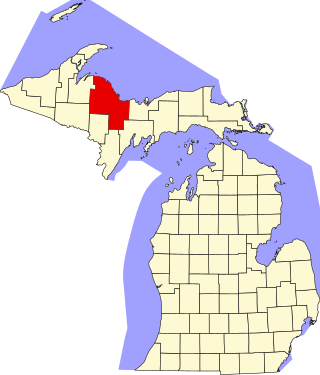
There are 40 properties or districts on the National Register of Historic Places in Marquette County in the US state of Michigan. The locations of National Register properties and districts in Marquette County for which the latitude and longitude coordinates are included below, may be seen in a map.

The Victory Theatre is a 1,950 seat venue in Evansville, Indiana. It is home to the Evansville Philharmonic Orchestra and also hosts local ballet and modern dance companies, theatre companies, and touring productions.

The Omaha Quartermaster Depot Historic District, including several brick structures built in Italianate and other styles, was built for the U.S. Army between 1881 and 1894. Located in South Omaha between Hickory and 22nd Streets, Woolworth Avenue and the Union Pacific Railroad main line in Omaha, Nebraska, the depot was listed on the National Register of Historic Places as a historic district in 1979. The depot previously operated as United States Army Reserve facility. The facility is considered surplus by the GSA and was put up for auction in the fall of 2013.

The Grand Opera House, also known as The Grand or Masonic Hall and Grand Theater, is a 1,208-seat theater for the performing arts in Wilmington, Delaware, United States. The four-story building was built in 1871 by the Delaware Grand Lodge of Masons to serve as a Masonic Temple and auditorium. The construction cost was $100,000. It was designed in Second Empire style by Baltimore architect Thomas Dixon and incorporates symbolism from Freemasonry into the cast-iron facade. Its central pediment contains an Eye of Providence.

The Rose Blumkin Performing Arts Center or The Rose, also known as the Astro Theater, originally opened as The Riviera. It is located in downtown Omaha, Nebraska. Built in 1926 in a combination of both Moorish and Classical styles, the building was rehabilitated in 1986.

The Playmakers Theatre, originally Smith Hall, is a historic academic building on the campus of the University of North Carolina at Chapel Hill. Built in 1850, it was designated a National Historic Landmark for its architecture, as an important example of Greek Revival architecture by Alexander Jackson Davis. It is now a secondary venue of the performing company, which is principally located at the Paul Green Theatre.

The Grand Riviera Theater was a movie palace theater located at 9222 Grand River Avenue in western Detroit, Michigan. It took its name from Grand River Avenue. It was designated a Michigan State Historic Site in 1980, and listed on the National Register of Historic Places in 1982, but was subsequently demolished in June, 1996. The building was removed from the National Register in 2020.
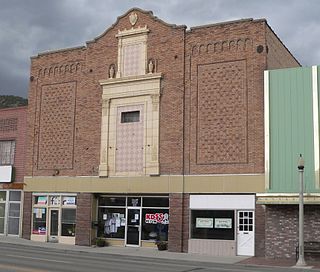
The Capital Theater in Ely, Nevada was built in 1916 by C.O. Fleming and W.P. Hull. The building began as a vaudeville hall that hosted a diverse range of live entertainment, including acrobats, comedians, lecturers, and magicians. The building reopened as a cinema in 1923, at a time when films were becoming popular. The theater closed in 1963. The building's style represents a possible reconstruction after a 1929 fire, and might best be described as Spanish Colonial Revival. The theater's design was carried out by the owners.
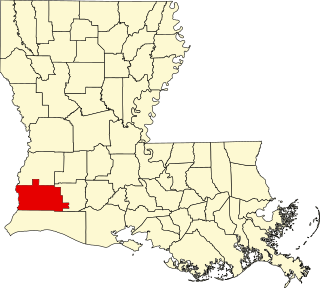
This is a list of the National Register of Historic Places listings in Calcasieu Parish, Louisiana.

The Landis Theatre–Mori Brothers Building is located at 830–834 Landis Avenue in the city of Vineland in Cumberland County, New Jersey. The building was built in 1937 and its first movie was Hats Off. The theater serviced the USO during World War II, and the auditorium was twinned in 1980. After 50 years of service to the Vineland community, it closed finally in 1987, victim of declining revenue against the Demarco Cinemas nearby. Its last movie was House 2. It was added to the National Register of Historic Places on November 22, 2000, for its significance in architecture, engineering, and entertainment/recreation. It was designed by Philadelphia architect William Harold Lee, who designed several historic theaters. Renovation of the theater was completed in early 2010, and it officially re-opened on May 22, with Bernadette Peters being the opening act.
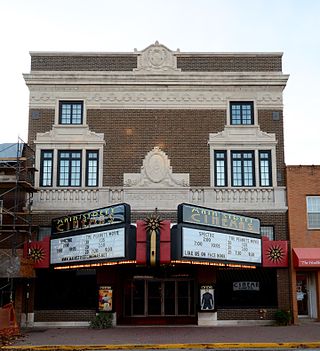
The Masonic Temple Theater is a historic building located in Mount Pleasant, Iowa, United States. Built in 1923, it combined both commercial and fraternal functions in one building. The theater company paid for the construction of the lower level, and the Masons paid for the upper level. The Masons continued to occupy the space until 1989 when they moved to another facility. The building was designed in the Neoclassical style by Owen, Payson & Carswell, and K.A. Bergdahl was the contractor who built it. Neoclassical features include the balustrade, the medallion with the Masonic insignia, volutes above the windows, the parapet roof, and the ornamental frieze and cornice.

The Alois and Annie Weber House is a historic building located in Keokuk, Iowa, United States. The significance of the three-story house is its association with the period of industrial growth in the city when it was built and as a fine local example of the Second Empire style. It features an asymmetrical concave mansard roof, decorative brackets, and pedimented dormer windows. The house is noteworthy for its tall narrow windows and high ceilings. Two additions were added to the rear of the house not long after the main house was built. The Queen Anne-style wraparound porch is supported by 14 classical columns. It also features a balustrade and spindlework along the beadboard ceiling. The house was listed on the National Register of Historic Places in 2002.

The Delchar Theater on W. Main St. in Mayville, North Dakota, United States, was built in 1927. It was listed on the National Register of Historic Places (NRHP) in 1985.

The Coleman Theatre is a historic performance venue and movie house located on historic U.S. Route 66 in Miami, Oklahoma. Built in 1929 for George Coleman, a local mining magnate, it has a distinctive Spanish Colonial Revival exterior, and an elaborate Louis XV interior. It was billed as the most elaborate theater between Dallas and Kansas City at the time of its opening, and played host to vaudeville acts, musical groups, and movies.
Four historic bridges on the Big Thompson River in Larimer County, Colorado survived its flood of 1976, but since have lost most of their historic integrity. They were built in 1933 and 1937. All four were listed on the National Register of Historic Places in 2002, and two were delisted in 2010.

Midwest Steel & Iron Works was a metal fabrication company based in Denver, Colorado. Founded in 1893, the company was known for a time as the Jackson-Richter Iron Works. The company was one of the "oldest and largest metal fabricators" in Denver. The company built both structural and ornamental components for structures throughout Colorado, Wyoming, and New Mexico. The company's headquarters on Larimer Street in Denver includes an Art Deco office building and consists of a four-building complex that is itself considered a historic industrial site. The complex served as the company's headquarters from 1923 to 1983.

The Brook Arts Center, formerly Brook Theatre, is a historic theater located at 10 Hamilton Street in Bound Brook of Somerset County, New Jersey. It was added to the National Register of Historic Places on May 5, 2014, for its significance in entertainment and performing arts.
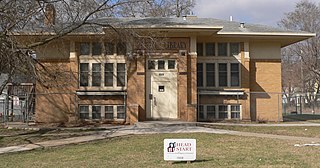
The Sioux City Public Library (Smith Villa Branch) is a historic building located in Sioux City, Iowa, United States. Local architect William L. Steele designed the Prairie School-style building, which was completed in 1927. This was long after the style was no longer fashionable in its native Chicago, but it shows its staying power in other areas of the Midwest. The building is identical to the former Fairmount Branch, which was built the same year. The Smith Villa Branch was listed on the National Register of Historic Places in 1983. The building now houses a Head Start program.
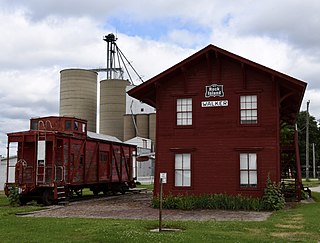
Walker Station is a historic building located in Walker, Iowa, United States. The two-story frame building with bracketed eaves was completed in 1873 along the Burlington, Cedar Rapids, and Minnesota Railway tracks. The depot also served its successor railroads: the Burlington, Cedar Rapids and Northern, and the Chicago, Rock Island and Pacific. Typical of many railroad towns in the Midwest, this is the first building that was built here and the town grew up around it. It is an example of a combination depot that was used for both passenger and freight usage in smaller communities. Because it has a ground level brick platform, service here was primary passenger and light freight service. A higher level of freight service would have required a raised platform.

The Midwest Oil Company Hotel, at 136 East 6th Street in Casper, Wyoming, is an historic hotel building which was listed on the National Register of Historic Places in 1983. It has also served as the Casper Women's Club House. Originally built by the Midwest Oil Company to accommodate workers during the Casper oil boom, it was taken over by Standard Oil Company of Indiana when that company bought Midwest Oil. In the 1930s, in the waning days of oil production in Natrona County, a local women's organization bought the hotel for $8,000 and was renamed the Casper Women's Club House.





















